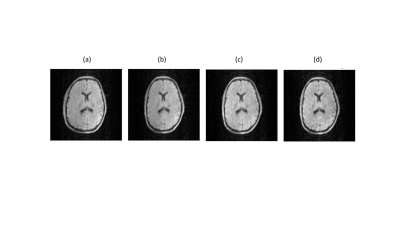Weekend Course
MRI Artifacts & Corrections
Joint Annual Meeting ISMRM-ESMRMB & ISMRT 31st Annual Meeting • 07-12 May 2022 • London, UK

| What Artifacts Do M.D.s (& Ph.D.s) Encounter, What Problems Do They Cause? | |||
| 12:30 | Artifacts in Neuroradiology
Chaitra Badve
|
||
| 12:55 | Artifacts in Body Radiology: Breast MRI
Katja Pinker-Domenig
This presentation will provide an overview of technical as well as patient factors that cause artifacts in clinical breast MRI and explain mitigation strategies. Pitfalls on breast MRI will briefly be discussed. The aim of talk is to facilitate an understanding of the causes of artifacts and their possible solutions and to enable practitioners of breast MRI to meet the challenges of high spatial and resolution breast imaging at high field strengths for best possible patient care.
|
||
| Correction Strategies for Artifacts Due to Bulk (Patient Movement and/or Pediatric) or Physiological Motion (Cardiac & Respiratory) | |||
| 13:20 | Bulk Motion Artifacts & Correction Methods
Jesse Hamilton
|
||
| 13:45 | Physiological Motion Artifacts & Correction Methods
Peng Hu
|
||
| 14:10 | Break & Meet the Teachers |
||
| Correcting System-Related Artifacts | |||
| 14:35 | Artifacts at High Field
S. Johanna Vannesjo
|
||
| 15:00 |  |
Artifacts at Low Field
Andrew Webb
This talk will discuss artifacts and mitigation strategies specifically for low-field and point-of-care MRI systems. Whereas many image artifacts such as fat/water shifts and those arising from medical implants and air/tissue boundaries are predictably much smaller or negligible at low-field, different types of artifacts can potentially occur due to time-dependent magnetic field drift, concomitant gradients, partial volume effects and flow. Gradient strengths are much less than conventional clinical systems, and with magnet inhomogeneities on the orders of hundreds of ppm this means that joint corrections for B0 and gradient non-linearity, together with magnet drift, are required.
|
|
| Artifacts Due to Acquisition (Spiral, EPI, Undersampling) | |||
| 15:25 | Artifacts in Spiral Imaging & Correction Methods
Craig Meyer
This educational talk will cover the sources of spiral image artifacts and methods for correcting for these artifacts. Spiral imaging is a promising technique with short scan times, high SNR efficiency, and robustness to flow and motion. A number of technical advances have enabled high-quality spiral scans on modern imaging hardware. However, spiral scans have different artifacts than Cartesian scans. Sources of spiral artifacts include aliasing of objects outside the field of view, eddy currents, and main field inhomogeneity. Eddy current effects can be eliminated through a one-time calibration and image reconstruction techniques can remove image blur due to inhomogeneity.
|
||
| 15:50 | Acquisition & Postprocessing Methods for Diffusion MRI Distortion Correction
Hua Guo, Jaejin Cho
|
||
The International Society for Magnetic Resonance in Medicine is accredited by the Accreditation Council for Continuing Medical Education to provide continuing medical education for physicians.